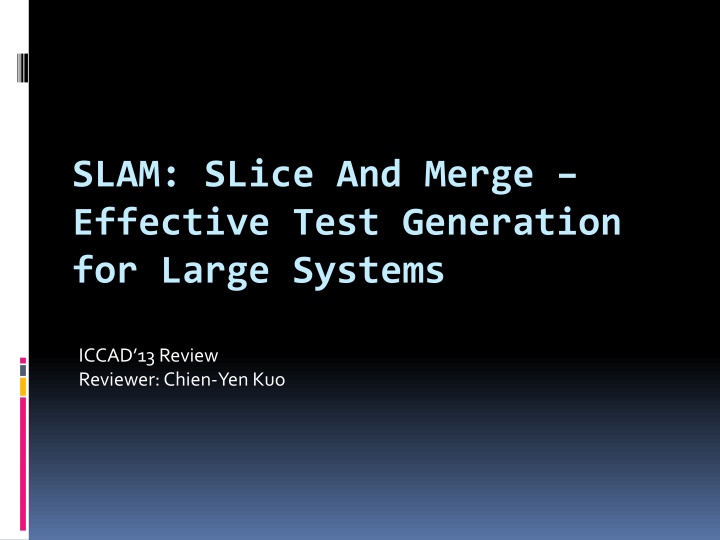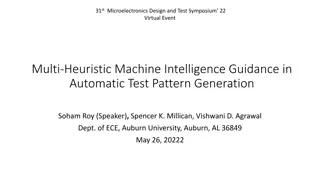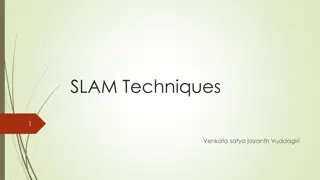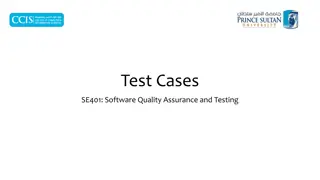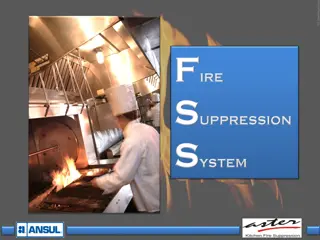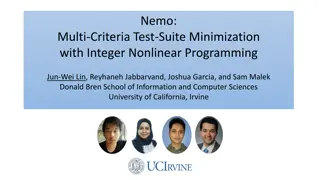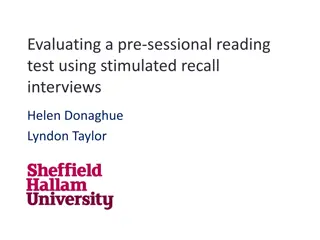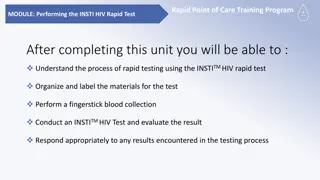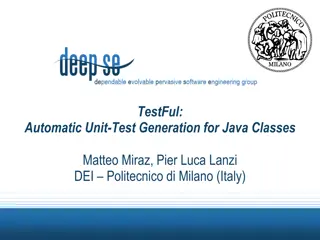Efficient Test Generation for Large Systems Using SLAM
This research discusses SLAM (SLice And Merge), a method for effective test generation in large systems. It focuses on using test templates to generate test cases efficiently, slicing the system into subsets with different templates assigned to each slice, and merging multiple templates for thorough testing. The verification cycle involves targeting various scenarios and functionalities within a single template, stressing common resources. SLAM aims to enhance system-level verification and interaction between components, addressing the challenges of testing complex systems.
Download Presentation

Please find below an Image/Link to download the presentation.
The content on the website is provided AS IS for your information and personal use only. It may not be sold, licensed, or shared on other websites without obtaining consent from the author.If you encounter any issues during the download, it is possible that the publisher has removed the file from their server.
You are allowed to download the files provided on this website for personal or commercial use, subject to the condition that they are used lawfully. All files are the property of their respective owners.
The content on the website is provided AS IS for your information and personal use only. It may not be sold, licensed, or shared on other websites without obtaining consent from the author.
E N D
Presentation Transcript
SLAM: SLice And Merge Effective Test Generation for Large Systems ICCAD 13 Review Reviewer: Chien-Yen Kuo
Introduction More logic squeezed into a single chip Verification by test cases Evaluated by functionality coverage Consideration of system-level verification Interaction between components Stress on common resources
Test templates To produce test cases more efficiently, use test template-based generator A template consists of statements written in high- level language Each statement represents a hardware transaction E.g., memory access of CPU, interruption from external I/O device to CPU A test generator parses statements and generate stimuli for corresponding components
Related works Top-level scenario composed of several components (scenarios) Component independency is needed Operating system Additional booting and running time Interleaving Additional scenario requirements Irritation A special case of SLAM
SLAM: SLice And Merge Fact: usually a test template is associated with only a subset of full system Assumption: exercising a stimulus(test case) on a subset of model does not undermine its effectiveness (prove in experiments)
Slicing Pre-defined/ Random/ Constrained-random slicing Each slice is assigned with a different test template
Merging Integrate SLAM into test generator Take more than one template/slice as input Alternatively parse statements from each template Maintenance History of generated statements(?) Current stimuli being generated Current state of components
Verification cycle For each function (unit, I/O bridge, or feature), write test templates for various scenarios Target various scenarios in one template Target various functionalities and stress the common resources in one template
Benefits of SLAM Reducing manual effort on template generation No complex template needed, use SLAM to generate complex test cases Cover unexpected scenarios Reducing regression time Since stimuli of templates exercise slices in parallel
Experiments Implemented in IBM System-level Test- Generator Use a subset of template library CACHE RESERVATION PREFETCH NEW FEATURE Coverage model used by System p verification team 400,000+ events divided into 8,000+ classes
Simulation on subsets of system On a chip with 64 hardware threads Vary the number of participating threads Observations Saturated event accumulation Larger subset does not necessarily lead to larger coverage
Coverage growth On a chip with 32 hardware threads Two combinations of templates NEW FEATURE and PREFETCH NEW FEATURE and RESERVATION 6 test cases per template vs. 12 SLAM test cases
Unique event coverage On a chip with 32 hardware threads Average results of two combinations of templates NEW FEATURE and PREFETCH NEW FEATURE and CACHE Observation A class of events are almost always hit by SLAM tests but not hit by any test of individual template
Conclusions SLAM, a method for test generation for large systems Divide systems into slices, each of which is the bench of a scenario Run test cases in parallel Reaching additional coverage events Used as part of the system level verification methodology for IBM System p servers
Comment and suggestions The benefits should be solid Suggestions Be more specific Slicing methods Related works Explanations on experimental results (example?) Put related work review in introduction Cite more in introduction
